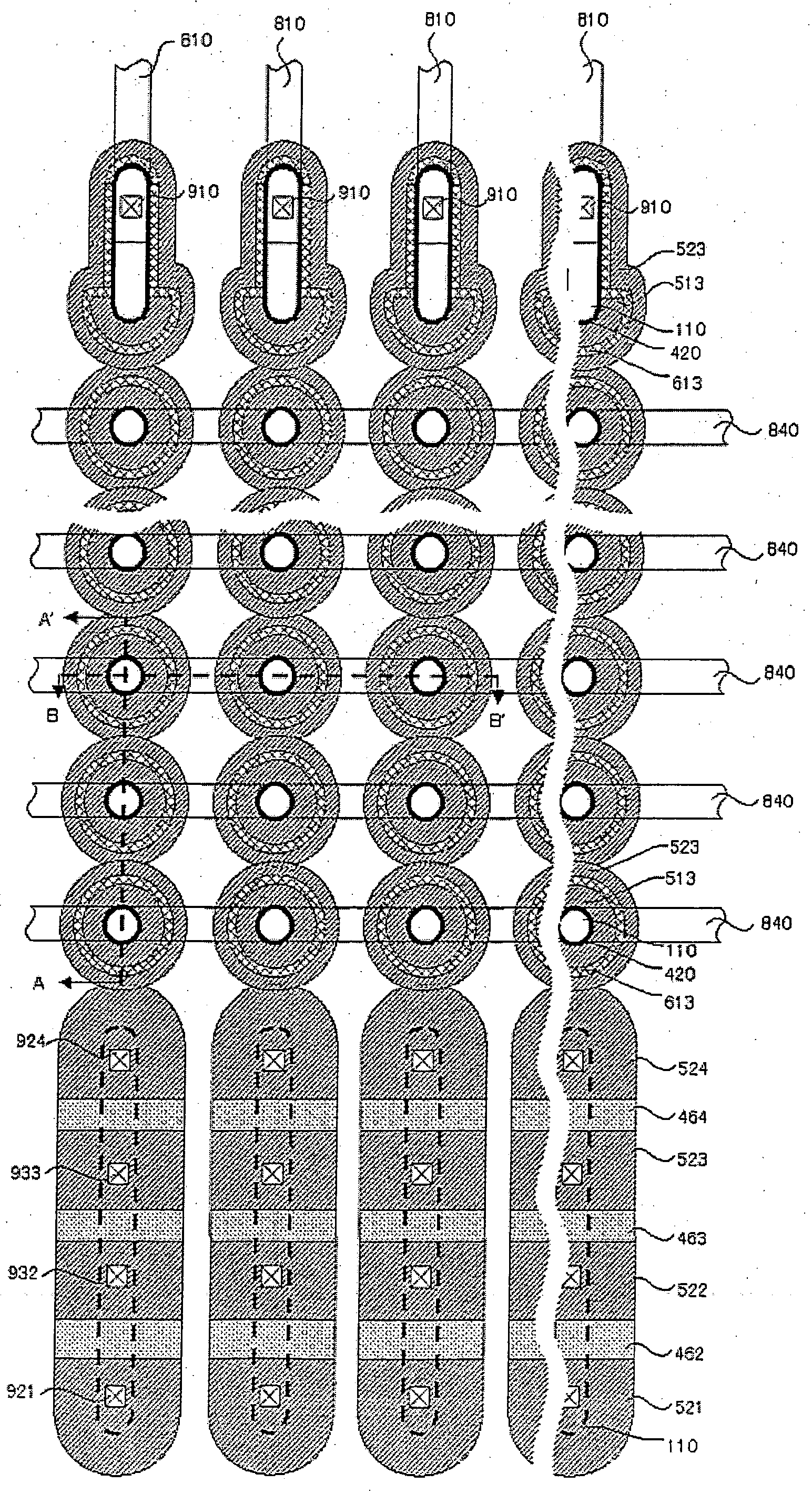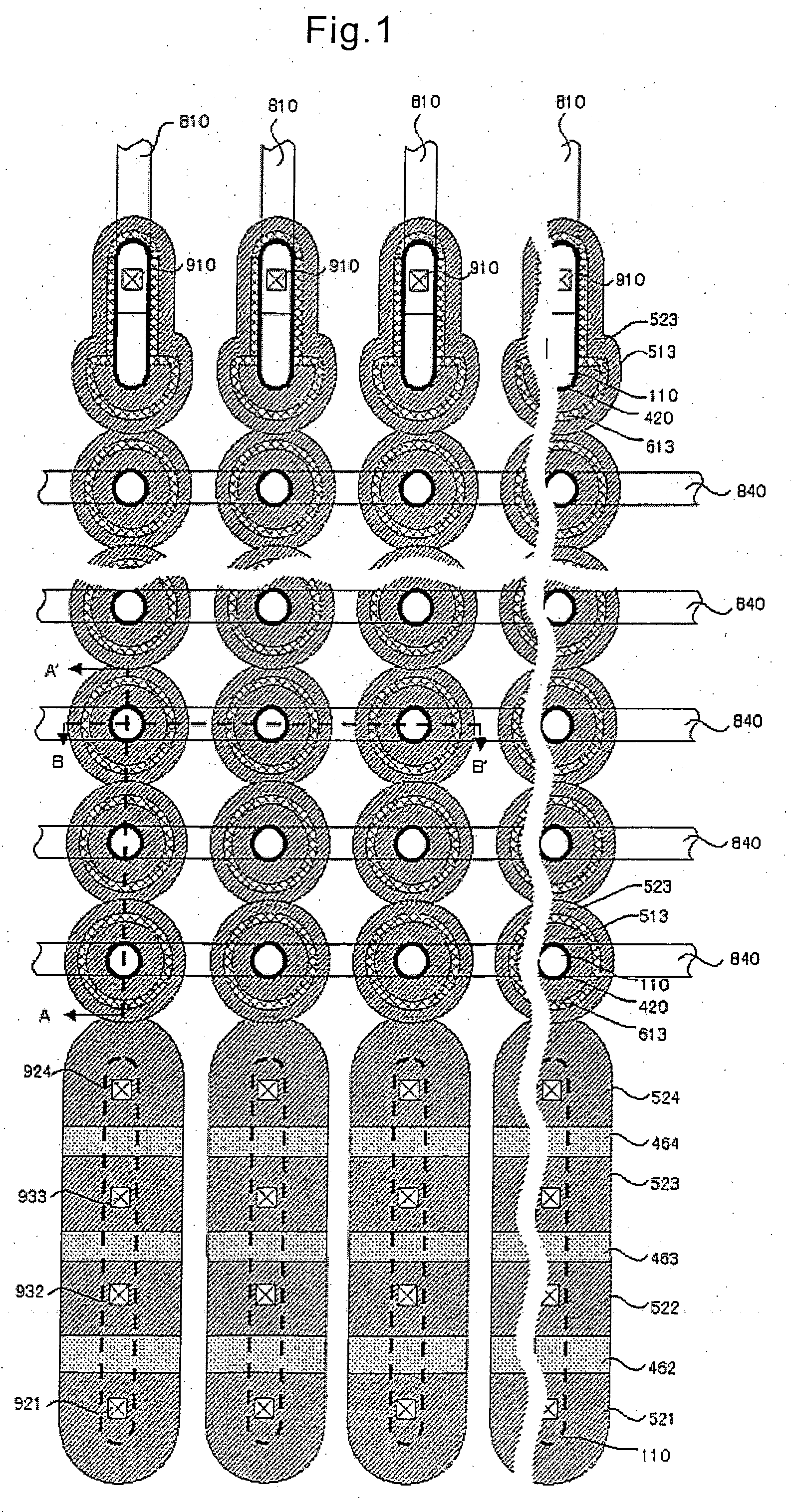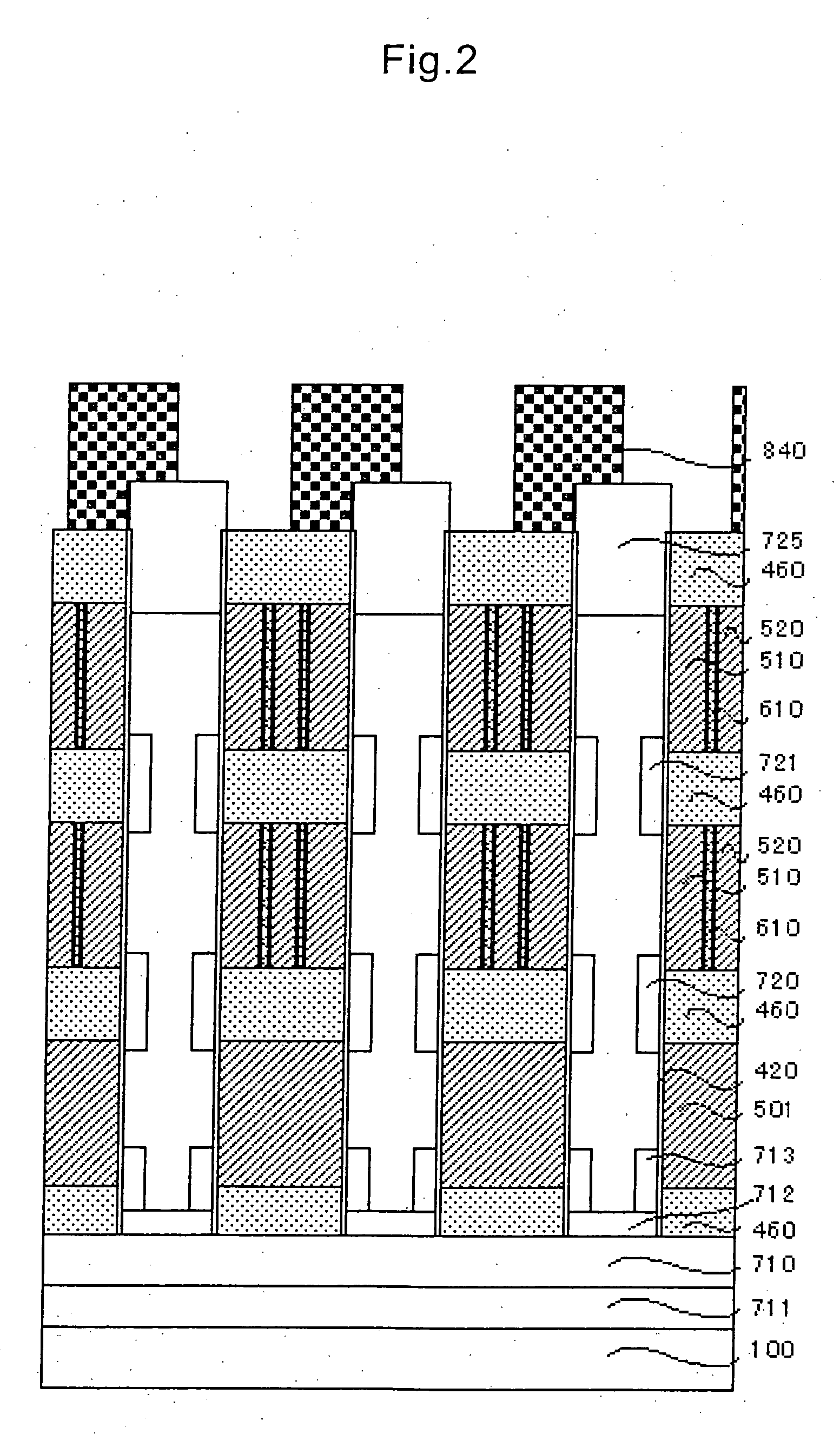Memory cell unit, nonvolatile semiconductor storage device including memory cell unit, and memory cell array driving method
a memory cell and nonvolatile technology, applied in the direction of digital storage, instruments, transistors, etc., can solve the problems of reducing the thickness of the gate insulation film in consideration of reliability, affecting the reliability of the control gate, and reducing the area of the memory cell, so as to prevent the erroneous writing, high reliability, and the effect of preventing the intensity of the field
- Summary
- Abstract
- Description
- Claims
- Application Information
AI Technical Summary
Benefits of technology
Problems solved by technology
Method used
Image
Examples
first embodiment
[0069] First Embodiment
[0070]FIG. 1 is a plan view of a memory cell unit array including memory cell units arranged in a matrix configuration according to a first embodiment. FIG. 2 is a sectional view of one example of the memory cell unit array taken along a line A-A′ in FIG. 1. In this embodiment, the memory cell units are respectively provided in association with column-shaped semiconductor layers 110 arranged in a matrix configuration on a p-type silicon substrate 100. The memory cell units each include a selection transistor having a selection gate 501 provided on a lower portion of the column-shaped semiconductor layer 110, and two memory cell transistors provided above the selection transistor and connected in series along the column-shaped semiconductor layer. The number of the memory cells provided in each of the memory cell units is not limited to two, but it is merely necessary to provide plural memory cells in the memory cell unit. For example, three memory cells may be...
second embodiment
[0079] Second Embodiment
[0080] An explanation will hereinafter be given to a memory cell array driving method according to the present invention. FIG. 10 is an equivalent circuit diagram of a memory cell unit to be driven by the driving method according to a second embodiment. The memory cell unit of FIG. 10 is an exemplary flash memory of a NAND memory cell type, which includes one or more memory cells (two memory cells M1, M2 in this embodiment) and two selection transistors N1, N2. FIG. 11 is a block diagram illustrating a memory cell unit array including a plurality of such NAND memory cell type flash memories arranged in a matrix configuration. FIG. 12 is an equivalent circuit diagram of the memory cell unit array.
[0081] As shown in FIGS. 11 and 12, the memory cell unit array includes NAND memory cell units Paa, Pab to Pac, Pad to be selected by selection gate lines SG1a, SG2a and control gate lines CG1a, CG2a, NADN memory cell units Pba, Pbb to Pbc, Pbd to be selected by sele...
third embodiment
[0099] Third Embodiment
[0100]FIG. 15 is an equivalent circuit diagram illustrating a memory cell unit including a single selection transistor according to a third embodiment. A memory cell unit array according to this embodiment has substantially the same construction as shown in FIG. 11. The memory cell unit is a flash memory of a type which includes one or more memory cells (two memory cells M3, M4 in this embodiment) and a single selection transistor N3. An explanation will be given to a driving method for this flash memory.
[0101] Writing Operation
[0102] Where electrons are to be injected into a charge storage layer 1 of the memory cell M3 in any one of selected memory cell units by a tunnel current for a writing operation, a high voltage VH1 is applied to a control gate 2, and a voltage VH2 (VH1>VH2) such as to prevent the writing is applied to a control gate 4. A voltage VH4 which is one half a writing prevention voltage VH5 to be applied to bit lines is applied to a selectio...
PUM
 Login to View More
Login to View More Abstract
Description
Claims
Application Information
 Login to View More
Login to View More - R&D
- Intellectual Property
- Life Sciences
- Materials
- Tech Scout
- Unparalleled Data Quality
- Higher Quality Content
- 60% Fewer Hallucinations
Browse by: Latest US Patents, China's latest patents, Technical Efficacy Thesaurus, Application Domain, Technology Topic, Popular Technical Reports.
© 2025 PatSnap. All rights reserved.Legal|Privacy policy|Modern Slavery Act Transparency Statement|Sitemap|About US| Contact US: help@patsnap.com



